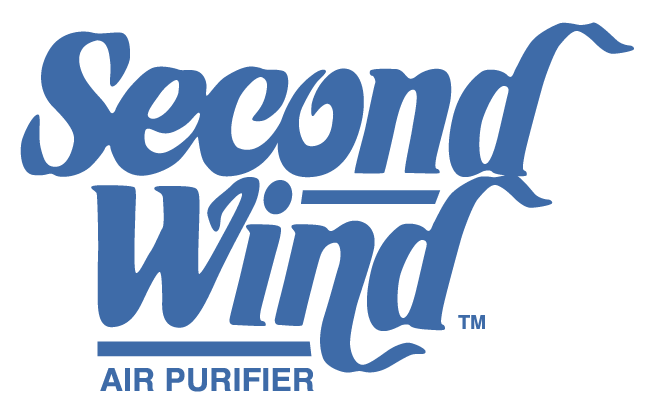From ThisOldHouse.com
Most people have heard about indoor (as in, the inside of their front door) air–pollution. Concern about it generally ranks fairly lowly because homeowners don't think it's much of a problem, they feel there's little they can do about it, or both.
The first assumption might be wrong in some cases, but the second–that there's nothing that can be done–is absolutely wrong.
According to the U.S. Environmental Protection Agency, most people spend 90 percent of their time indoors, where they are exposed to far greater air-pollution risks than they are when strolling outdoors. Generally, the EPA says, indoor air is four or five times more polluted than outdoor air. It has found some household air samples to be 100 times more polluted.
The irony is that increasing energy efficiency of U.S. homes has created this problem, which makes sense when you think about it. The more effective a home is at sealing off the outside environment, the more likely it is to seal in unwanted indoor pollutants.
What causes good air to go bad?
A whole host of factors play a role. The list includes (but is far from limited to dust, animal hair and dander, mold spores, bacteria; smoke; pollen, dust mites, lint, and cooking grease. And these bad elements exist to a degree in even the cleanest homes. A typical 3,000–square–foot house, for example, generates 80 pounds of dust.
Cigarette smoke, of course, is one of the most damaging sources of indoor air pollution, containing about 4,000 chemical compounds, more than 40 of which are known to cause cancer in humans, the EPA says. So, rule No. 1: Don't smoke or allow others to do so in your home.
Fireplaces pollute homes, and so do solvents used in cleaning and hobby activities, paint strippers used for redecorating activities, cleaning products, and pesticides. High–pollutant concentrations can remain in the air for long periods.
Then there's most people's favorite, pollen. Insects transport a lot of pollen, but for some species of trees, wind is actually a more common distributor.
Before you run over to the Army–Navy supply story for a bio-hazard mask, take the following steps. Some are very simple and even the most ambitious can be done with common household tools.
—Make sure exhaust fans and dryer exhausts vent outside
— Ventilate your attic and crawl spaces to prevent moisture build–up
—If using cool mist or ultrasonic humidifiers, clean them according to the manufacturer's instructions and refill them with fresh water daily
—Thoroughly clean and dry water–damaged carpets and building materials (within 24 hours, if possible) or consider replacing
—Keep the house as clean as possible. House dust mites, pollens, animal dander, and other allergy–causing agents can be reduced, although not eliminated, through regular cleaning
Additional tips include:
—Keep pets away from home furnishings like beds and couches that can collect their dander fi Wash bed linens regularly to inhibit dust mites
—Keep the relative humidity at 30 percent to 50 percent, both for optimal home comfort and to control the growth of biological irritants like mildew. Bonus: it'll kill dust mites, too
—Clean and disinfect the basement floor drain regularly. Do not finish a basement below ground level unless all water leaks are patched and outdoor ventilation and adequate heat to prevent condensation are provided. Operate a dehumidifier in the basement if needed
—Make sure all fireplaces, wood–burning stoves, ovens, and stovetops are in proper working order and adjustment, with adequate ventilation to the outside
—Properly seal paints, solvents, pesticides and chemicals of any type in your home. Keep quantities to a minimum. Whenever possible, keep such items stored in the garage.
On a macro level, consider upgrading your heating and air–conditioning system with a state–of–the–art air cleaning system, which can work in concert with your heating and cooling system.
While there are many types of air–cleaning systems available, what matters most about any given system is how effective a job it does keeping the air inside your home clean and safe.
And that can be evaluated scientifically and objectively, thanks to a standardized measurement created to rate relative efficiency.
The industry standard used by the Federal Trade Commission, EPA, and American National Standards Institute to compare various air–cleaning technologies is called the clean–air–delivery rate, or CADR.
The CADR is the amount of clean air a system will deliver into your home for a typical three–ton system as compared to other whole–house and appliance air cleaners. Two factors affect this rating–the efficiency of the filter material and the amount of air that passes through the device.
The higher the clean–air–delivery rate, the better the system is at filtering indoor air. Do not expect a small, tabletop air cleaner to clean the air in your entire home.
That said, today's most efficient air cleaners can remove up to 99.98 percent of airborne allergens, a rate that's 120 times more effective than a typical ionic–type appliance air cleaner.
The difference can be dramatic, especially in homes with people who suffer from seasonal or other forms of allergies.
The benefits of such a system include not only cleaner, fresher air indoors, but a much healthier environment for your family, which after all is the most important priority for most of us.








